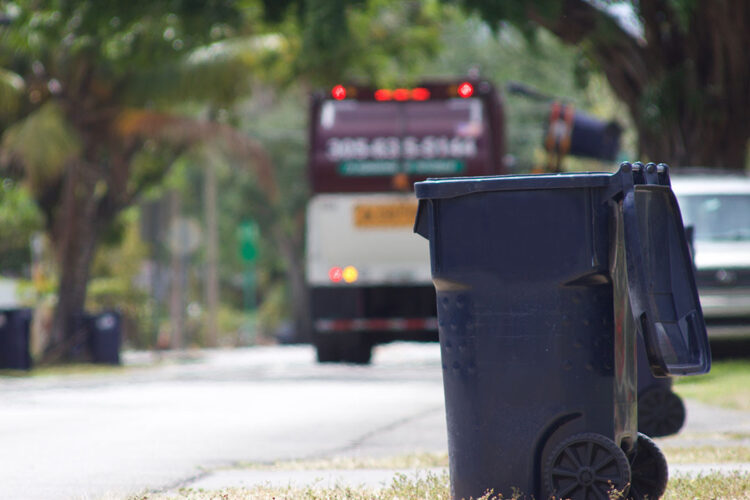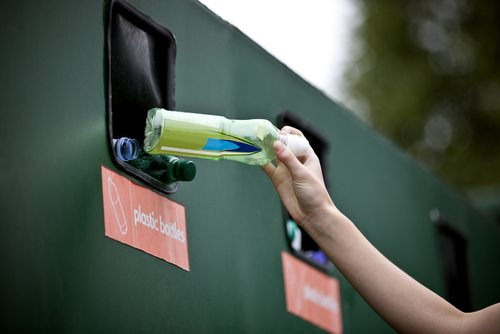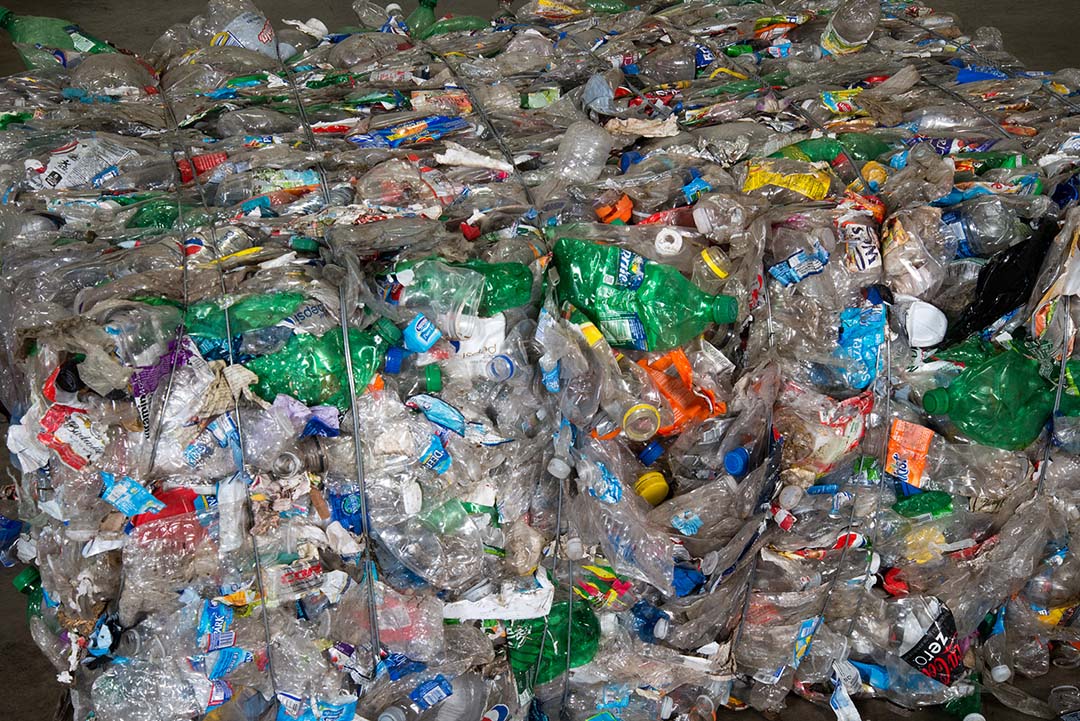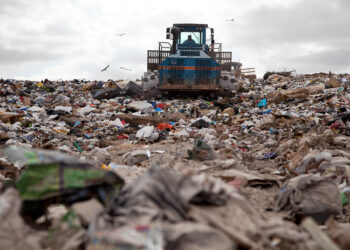A new life cycle assessment quantifies the impacts of different curbside collection scenarios, concluding that a typical single-stream recycling program reduces overall emissions by almost 40% when compared with simply landfilling the material.
However, the Environmental Research & Education Foundation (EREF) study also found that recycling-related transport and processing for some materials, such as glass, can negate greenhouse gas (GHG) benefits. And it determined that including food scraps and yard waste in curbside programs can potentially limit emissions benefits as well.
“A combination of landfill with gas to energy combined with recycling contributed to the greatest reduction in GHG emissions and energy demand assuming a closed-loop (e.g., bottle to bottle) recycling system,” the report stated. “However, the end use of the recyclables are very important and sustainability benefits can be highly variable and even erased under some non-closed loop end use scenarios.”
Recycled always better?
A primary focus of the assessment was comparing GHG emissions and fossil fuel energy use associated with landfilling, recycling and composting to find out whether using a recycled material is always better than using a virgin material. The research also investigated whether there are scenarios where it is better not to divert a material and how the transportation distance from processing facility to re-manufacturer affects the benefits of recovering a given item.
Materials management was analyzed under four scenarios: an all-landfill scenario (one bin), a curbside single-stream recycling scenario (two bins), a curbside single-stream and yard waste composting scenario (three bins), and a curbside single-stream and combined yard/food waste composting scenario (three bins).The analysis used 2014 data from the EPA for the percentages of material in a recycling stream, including paper, OCC, ferrous metal and aluminum containers, HDPE containers, PET containers, PP containers and glass containers.
It also assumed a MRF contamination rate of 18% and a collection fleet using 80% diesel and 20% compressed natural gas. Finally, the model assumed baled recyclables went to a closed-loop or best-case remanufacturing end use.
GHG reduction results
Overall, the study found that the two-bin scenario resulted in a 38% reduction in emissions, compared to the landfill-only scenario. Meanwhile, a three-bin, yard-waste-only system had overall emissions roughly equivalent to that of the landfill-only scenario. The fourth scenario, with combined food and yard waste, resulted in a 10% emissions savings.
When it came to fossil fuel energy use, all scenarios resulted in energy savings compared to just landfilling. The two-bin scenario once again had the highest energy savings, followed by the three-bin yard-waste-only scenario and then the combined yard and food waste scenario.
Learn more in person
A session at the 2022 Resource Recycling Conference will explore how cities are tying their materials recovery efforts to the fight against climate change. The speakers are Scott Pasternak of Burns & McDonnell, Amy Larkin of PR3, and Joe Bontempo of The Recycling Partnership. Register to attend the conference today.”The primary reason all scenarios saved energy relates to using recovered recyclable materials in remanufacturing relative to processing virgin materials,” the report noted. “Thus, the primary means of energy savings when diversion from landfill scenarios are considered is from recycling. Yard waste or mixed organics composting results in some additional fossil energy use due to activities such as curbside collection and pile aeration; as a result, energy savings are slightly reduced for these scenarios.”
However, the report also noted that composting has “other significant environmental benefits.”
“The use of compost has been shown to improve soil quality and structure, control erosion and sedimentation and improve water retention,” the report stated. “These benefits would not be captured in impact assessments focused solely on GHG and energy use, such as the one performed in this study.”
Transportation emissions are a relatively small percentage of total emissions, but can still have an effect, the report found.
“This is especially true for materials with more marginal emissions benefits associated with their recycling such as fiber and glass,” it said. The report determined the emissions benefits of recycling fiber are negated after the material is transported 360 miles; for glass, the number is 1,150 miles.
Plastics and metals can be transported the farthest without negating recycling benefits, upwards of 3,200 miles by truck, or coast to coast.
Actions in control of the industry
Between 66% and 70% of emissions associated with typical materials in the waste stream are caused by product manufacturing and consumer behavior, the report noted, and are therefore out of the control of the waste and recycling industry.
“Of the activities the waste industry can control, landfilling has the largest impact on GHG emissions, and efforts to improve gas capture rates provide the highest GHG benefits,” the report advised.
Improving how well residents correctly sort recyclables into the recycling bin can reduce emissions significantly, the report suggested, and there is “significant room for improvement through activities such as education, outreach and labeling.”
Boosting landfill gas capture rates and minimizing downtime of landfill gas management equipment would provide the highest emission reducing benefit for landfilled materials, the report suggested, and transitioning collection vehicles to compressed natural gas or electric would help reduce emissions on the collections side.
Although decisions about remanufacturing processes are not directly within the industry’s control, the report noted that improved MRF design and operation could create better bales to allow better end uses and markets.
“To remain viable long term, the success of recycling and composting rests upon the ability to demonstrate that it can achieve the triple-bottom line of people, planet and profit,” the report said.


























